Best Space Photos of the Week - Nov. 5, 2011

— Tom Chao (Image credit: Canada-France-Hawaii Telescope/Coelum)
Alien City Lights, Giant Spots on the Sun and The Obamanaut Dons a Spacesuit
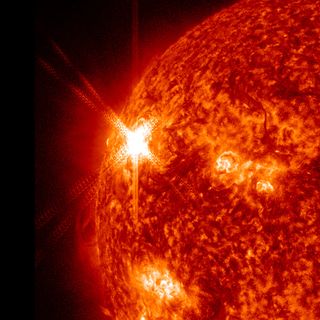
This week we watched pumpkins glow in space, looked for bright alien city lights and took space fashion lessons from our commander-in-chief.
See some of the best space photos of the week of Nov. 5, 2011.
So Young, So Young

IRAS 10082-5647, a young Herbig Ae/Be star, shines at the center of this Hubble Space Telescope image, with a reflection nebula glowing around it. Stars only spend around 1% of their lives in this pre-main sequence phase. Eventually, hydrogen fusion will begin, propelling the star into the main sequence phase, and adulthood. [See more stunning photos from space]
Article: It's the Space Pumpkin, Charlie Brown: A NASA Worker's Halloween Tradition
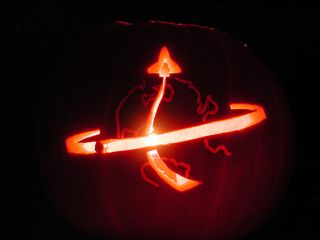
For NASA worker Liz Warren, Halloween runs deep as a family tradition and she's bringing that passion to NASA's Johnson Space Center, where she carves a space-themed jack-o-lantern for Mission Control every year. [Full Story]
NASA's Rocket Legacy: 75 Years of Space Engine Tests
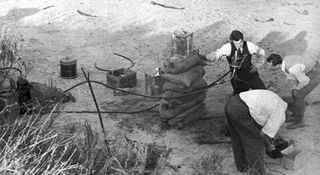
Monday (Oct. 31) marked the 75th anniversary of NASA's venerable Jet Propulsion Lab in Pasadena, Calif., which began when a ragtag group of rocket scientists conducted one of the first tests of a liquid-fueled rocket motor in the dry riverbed of the Arroyo Seco.The story is told in a 90-minute documentary called "The American Rocketeer," which begins airing Thursday on California public TV. [Full Story]
Outfitting the Obamanaut: The President's New Space Clothes

The commander-in-chief, President Barack Obama, donned the jacket for a different type of commander while meeting with the astronauts who flew NASA's final space shuttle mission inside the Oval Office at the White House on Tuesday (Nov. 1). [Full Story]
Alien City Lights Could Signal E.T. Planets
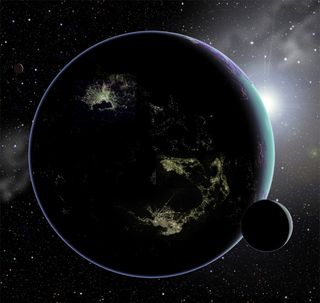
Scientists suggest that we could look for extraterrestrial civilizations by searching for artificially illuminated planets that have different spectral signatures from naturally, sun-illuminated objects. [Full Story]
New Space Station Camera Shows What Night Views of Earth Really Look Like
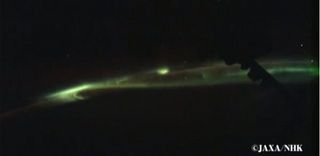
A new camera on the International Space Station is offering astronauts a better way than ever before to communicate what it really looks like to see the Earth from space. [Full Story]
Largest Sunspot in Years Observed on the Sun
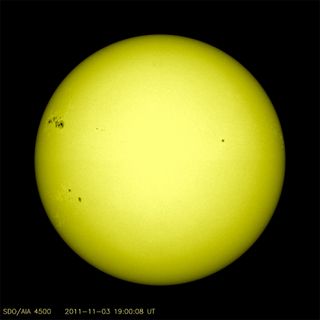
One of the largest sunspots in years has appeared on the sun, darkening part of its glowing face.The massive sunspot, called AR1339, is about 50,000 miles (80,000 km) long, and 25,000 miles (40,000 km) wide, reports SpaceWeather.com. For comparison, Earth itself is only 8,000 miles (12,800 km) wide. [Full Story]
Giant Sunspot Unleashes Massive Solar Flare

A powerful solar flare that erupted Thursday (Nov. 3) from a huge blemish on the sun's surface has been classified as an X1.9 flare, ranking it in among the most powerful types of storms from our star can unleash.The flare originated in a humongous sunspot that was sighted earlier this week, which ranks as one of the largest sunspots seen in years. The event began at 4:27 p.m. ET (2027 GMT). [Canada-France-Hawaii Telescope/Coelum
Lynds' Dark Nebula (LDN) 1622 demonstrates the evolution of stars. Star formation results from the collapse of giant clouds of molecular gas and dust. The stars eventually emerge into visibility with their blue light scattering and reflecting off dust particles present in the gas. LDN 1622 lies near the plane of our Milky Way Galaxy, close on the sky to Barnard's Loop. LDN 1622 is situated perhaps only 500 light-years away. [See more stunning photos from space]
The Dunes

The THEMIS instrument on Mars Odyssey spacecraft captured this image of dunes in Lohse Crater on September 4, 2011. In December 2010, Odyssey became the longest-serving spacecraft at Mars. [See more stunning photos from space]
Join our Space Forums to keep talking space on the latest missions, night sky and more! And if you have a news tip, correction or comment, let us know at: community@space.com.
Get the Space.com Newsletter
Breaking space news, the latest updates on rocket launches, skywatching events and more!

Space.com is the premier source of space exploration, innovation and astronomy news, chronicling (and celebrating) humanity's ongoing expansion across the final frontier. Originally founded in 1999, Space.com is, and always has been, the passion of writers and editors who are space fans and also trained journalists. Our current news team consists of Editor-in-Chief Tariq Malik; Editor Hanneke Weitering, Senior Space Writer Mike Wall; Senior Writer Meghan Bartels; Senior Writer Chelsea Gohd, Senior Writer Tereza Pultarova and Staff Writer Alexander Cox, focusing on e-commerce. Senior Producer Steve Spaleta oversees our space videos, with Diana Whitcroft as our Social Media Editor.
